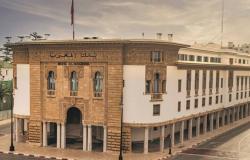The Israeli army bombarded the Gaza Strip on Sunday, particularly the north of the territory where it continues its operations after several days of fierce fighting against Hamas, which pushed thousands of Palestinians to flee.
The war, triggered by an unprecedented attack by the Islamist movement in Israel on October 7, is continuing unabated across the Palestinian territory, and raises fears of a flare-up in Lebanon.
A total of 32 of the 36 hospitals in the Gaza Strip have been damaged, and 20 of them are out of service, according to the World Health Organization (Window)
According to an AFP correspondent, numerous airstrikes targeted different areas during the night, including Gaza City in the north, as well as Rafah and Khan Younes in the south.
Israeli troops launched a ground offensive on May 7 in Rafah, a border town with Egypt that Israel then presented as the last major Hamas stronghold. But fighting has since intensified in several other regions, particularly in the north.
Since Thursday, Israeli forces have been carrying out a ground operation in Shujaiya, an eastern neighborhood of Gaza City, where fighting rages between soldiers and Palestinian fighters.
The operation continued on Sunday, according to witnesses and doctors.
The army announced that, the day before, it had “eliminated several fighters, discovered weapons, carried out targeted raids on trapped combat positions” and had “struck dozens of infrastructures in the sector”.
The army called on the inhabitants of Choujaiya to evacuate on Thursday, pushing “tens of thousands of civilians” to flee, according to Civil Defense.
“In the streets, people were panicking, they were terrified,” said Samah Hajaj, 42. “We don’t know why” Israeli soldiers “entered Shujaiya since they had already destroyed the houses there,” she added.
The army also announced on Sunday that it would continue its operations in Rafah and in the center of the Gaza Strip.
A strike on a house in northwest Rafah killed six people, according to rescuers and doctors. Artillery fire, according to witnesses, also targeted several areas in the south of the city.
The October 7 attack, carried out by Hamas commandos infiltrated from Gaza in southern Israel, resulted in the death of 1,195 people, mostly civilians, according to an AFP count established from official Israeli data.
Of 251 people kidnapped, 116 are still held hostage in Gaza, among whom 42 are dead, according to the army.
In retaliation, Israel promised to destroy Hamas, in power in Gaza since 2007. Its offensive on the Gaza Strip has so far left 37,834 dead, mostly civilians, according to data from the government’s Health Ministry. Gaza ruled by Hamas.
The war has caused massive population displacement in the small territory besieged by Israel, where water and food are in short supply.
A total of 32 of the 36 hospitals in the Gaza Strip have been damaged, and 20 of them are out of service, according to the World Health Organization (WHO).
A mission officer for the UN agency for Palestinian refugees (UNRWA), Louise Wateridge, described living conditions in the territory as “dire” on Friday, where humanitarian aid is arriving in dribs and drabs.
In Tel Aviv, thousands of demonstrators gathered again on Saturday to demand the return of the hostages and to protest against Israeli Prime Minister Benjamin Netanyahu, who has been widely criticized for his handling of the war.
A 26-year-old former hostage, Noa Argamani, who was freed on June 8 along with three other captives during an Israeli army operation, appealed for their release in a video message.
“Although I have returned home, we cannot forget the hostages who are still in Hamas captivity, and we must do everything in our power to bring them home,” she said.
A senior Hamas official based in Beirut, Osama Hamdan, said on Saturday that negotiations for an agreement with Israel on a ceasefire and the release of hostages had not led to any progress.
He affirmed that his movement had received the latest American proposal on June 24, but that it brought “nothing new”.
A plan presented at the end of May by US President Joe Biden, proposed according to him by Israel, remained a dead letter in the face of the irreconcilable demands of the two camps.
Benjamin Netanyahu wants to continue the war until the total defeat of Hamas and the release of all hostages, while the Palestinian movement demands a permanent ceasefire and a total Israeli withdrawal from Gaza.
Fears that the conflict could spread to Lebanon have recently grown with threats exchanged between Israel and Hezbollah, a powerful Islamist movement allied with Hamas.
Since October 7, there have been almost daily exchanges of fire between the Israeli army and Hezbollah on the Israeli-Lebanese border, forcing tens of thousands of residents of border areas in southern Lebanon and northern Israel to flee.






